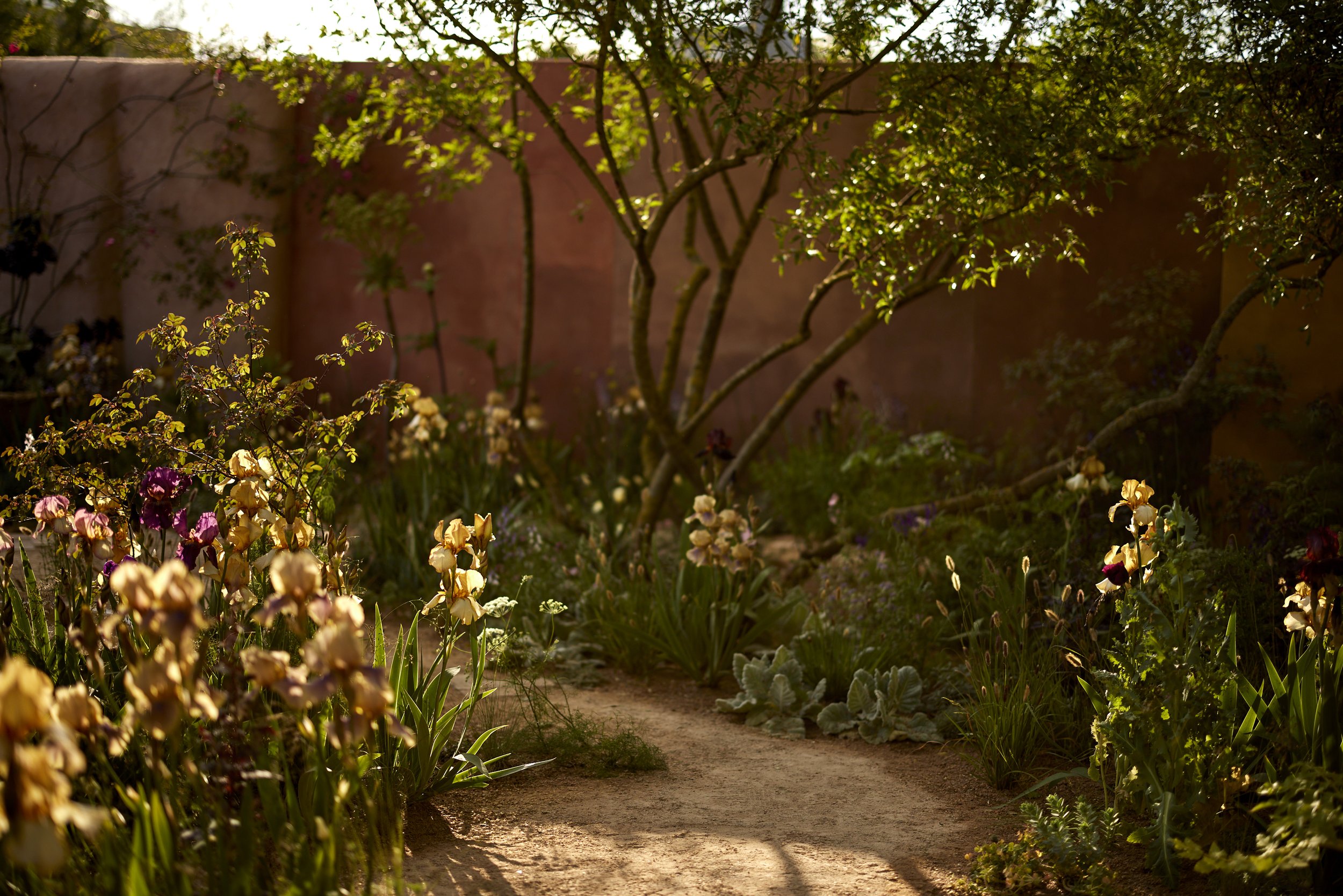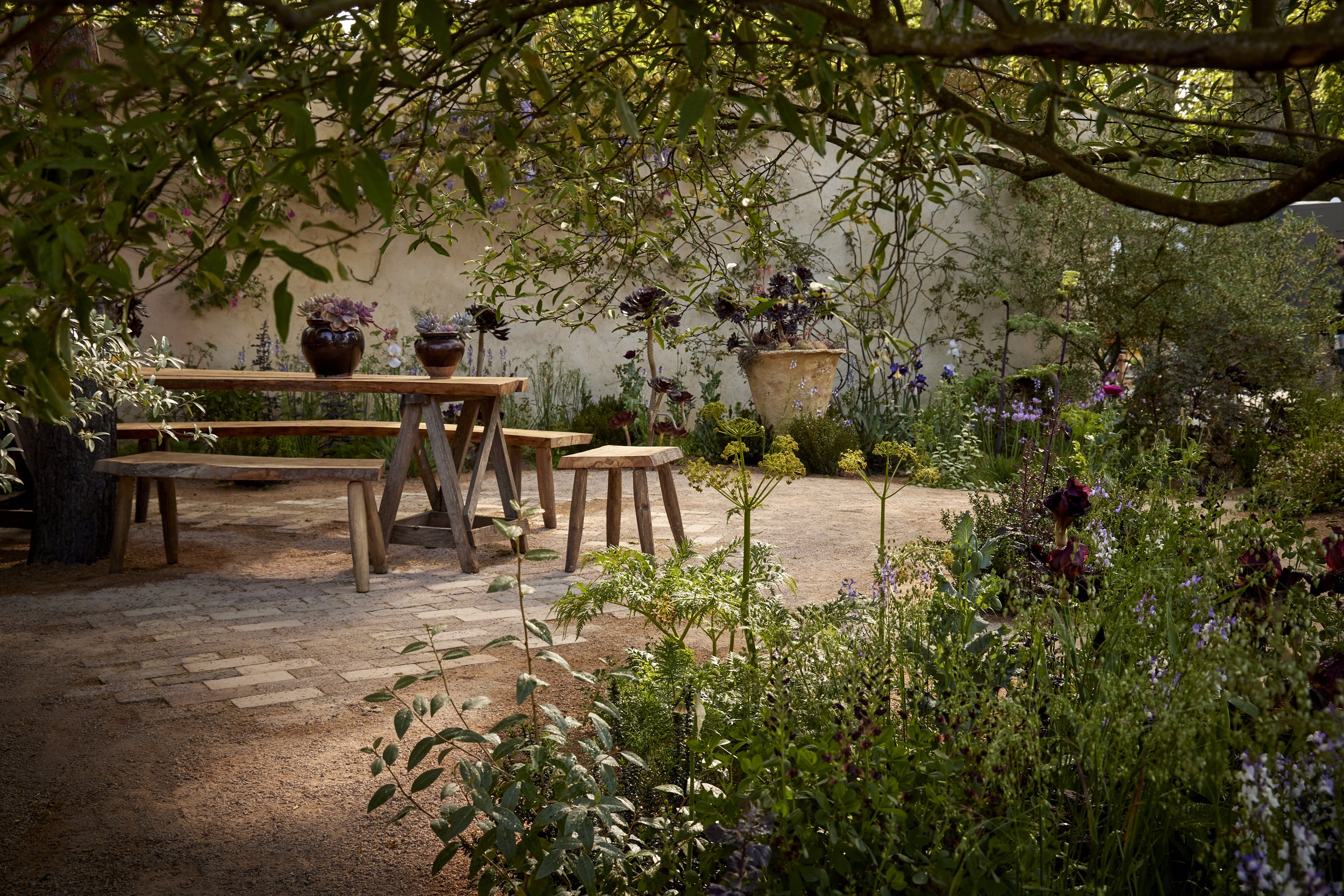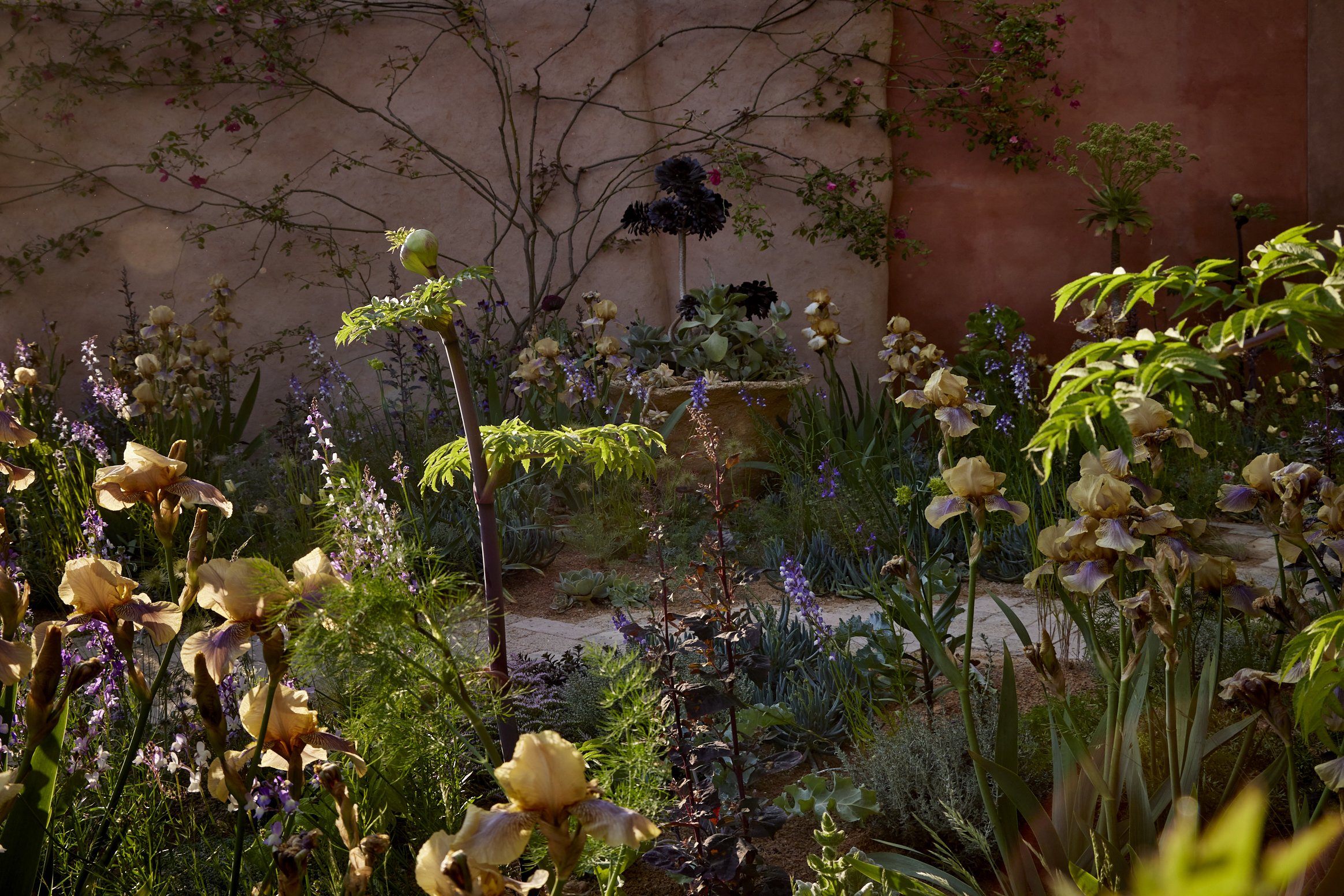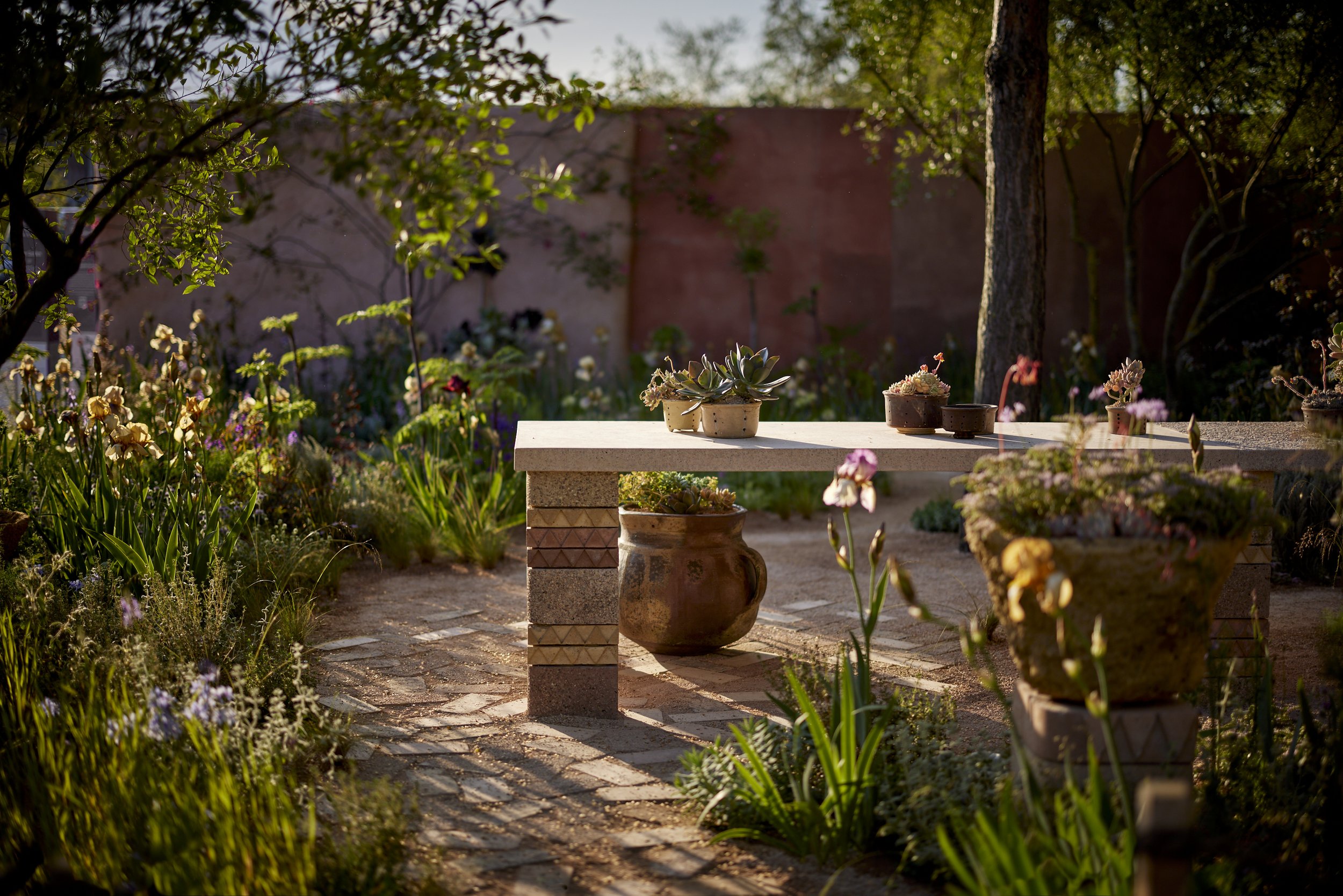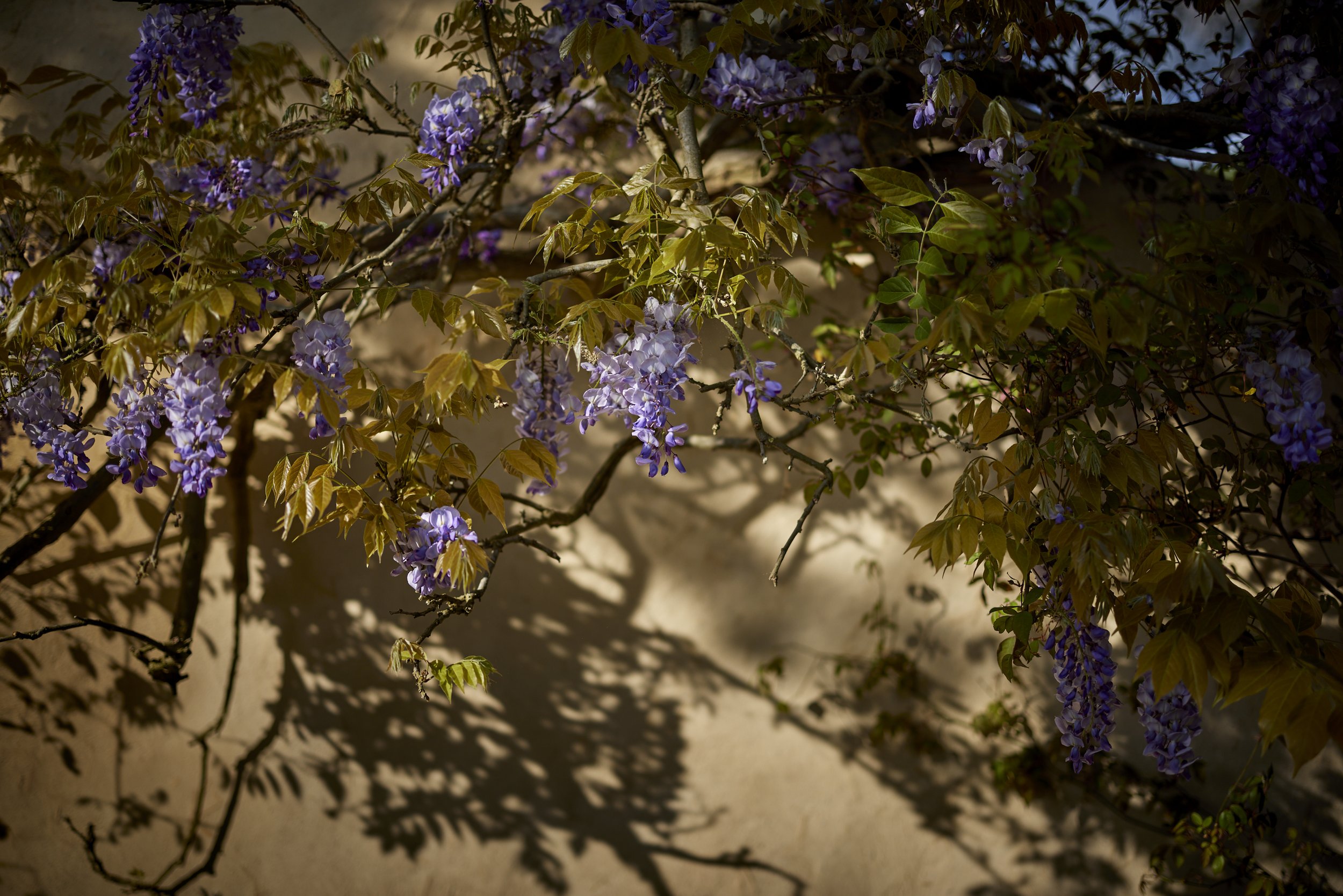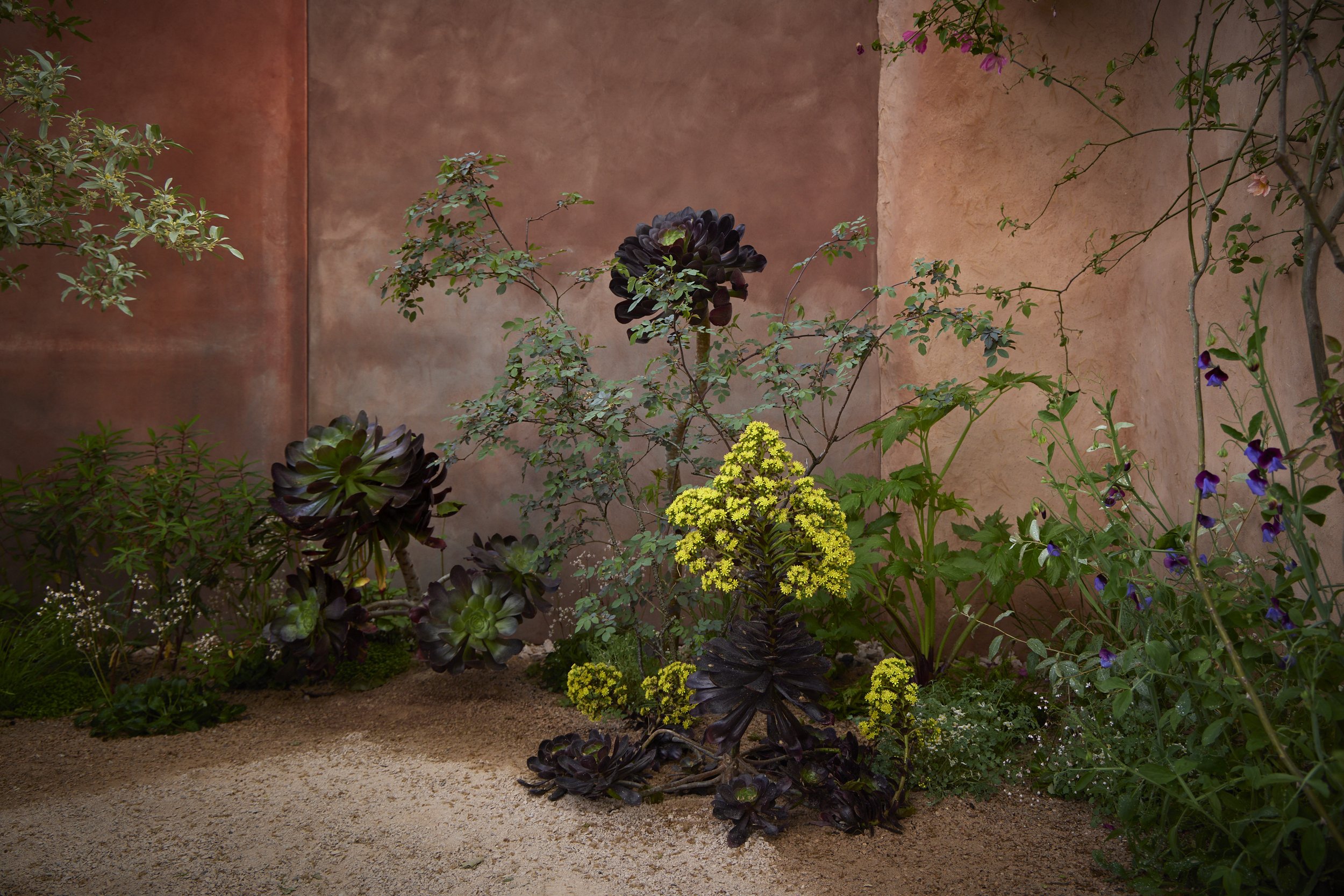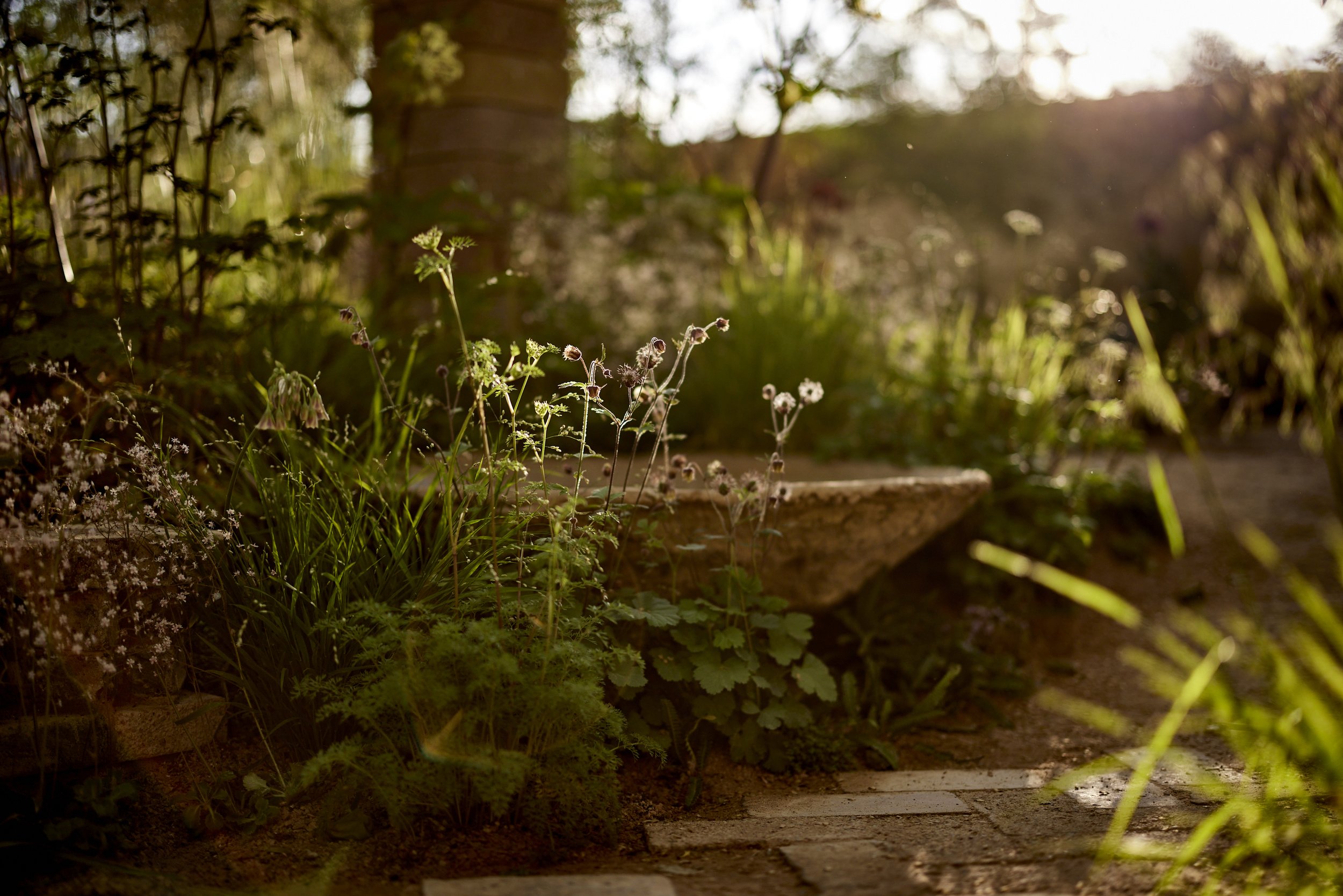12th March 2024
RHS Chelsea 2023 / Nurture Landscapes Garden
So thankful to have these beautiful photos by © Alister Thorpe.
4th October 2020
Last year we boldly dug out topsoil in an unproductive, weed ridden central bed of my kitchen garden and replaced it with recycled sand and gravel as a growing medium. At first it looked barren with tiny, insignificant plants but during lockdown it gradually came to life with species tulips followed by our native pasque flowers. Now it’s a colourful riot of drought tolerant plants. I can clearly imagine exactly how the potato patch across the path will be similarly transformed with slender spires of pale yellow Reseda luteola (Dyer’s rocket) and the stately umbels of parsnip, Briza media, fennel and the sky reaching violet-blue blooms of Salvia candelabrum.
For me the daily observations of these sand plantings is like listening to a complex piece of instrumental music over and over again. The sun loving plants have been grown hard and so as a result are shorter and more intricate, multi-layered and interlaced with undulations of tempo, repeating melodies and staccato accents. It’s felt like a meditation to walk out every morning during lockdown and to see how tiny critters inhabit, harvest and animate these short lived compositions.
But it’s not just been about plants. It’s also been about how we as a family have been using our garden. I’ve had time to observe the subtle differences of my four and six year-old’s interactions. Both of them have their particular routes and interests; wild strawberry harvesting, visiting ants nests, observing ladybird larva is popular, while searching for fragments of old pottery is my youngest’s obsession. We now know the individual territories and the songs of many of the birds here, even the shy Song Thrush. This feels symbolic. Our relationship with the garden has become settled and in tune. Gardening time is an everyday creative and emotional necessity and no longer a luxury.
Photos © Sarah Price
10th June 2020
Photo © Sarah Price
21st May 2019
I’ve regularly collaborated with artist and designer Victoria Collinge since our art school days, creating mixed media installations of photographs, prints and films. I was dazzled when Victoria showed me this collection of prints which beautifully capture the spirit of my planting for the M&G Garden at the 2018 RHS Chelsea Flower Show. Created from a series of watercolour paintings her designs draw on the varied forms, colours and textures of my Mediterranean plant palette: Chartreuse umbels of giant fennel jostle alongside deep pink pin-pricks of Dianthus and the arching forms of Gladiolus byzantinus. Printed onto velvet and linen in two different colourways - Dusty Lilac and Golden Green - the collection is available from:
16th March 2019
Nigel Dunnett’s Naturalistic Planting Design:
In Conversation with Sarah Price
Join us for the launch of Nigel Dunnett’s much anticipated new book, Naturalistic Planting Design – The Essential Guide. To celebrate the release of this book, Nigel will be in conversation with garden designer Sarah Price.
Date: 2nd April 2019
Time: 7.00pm - 8.00pm
Venue: The Garden Museum
gardenmuseum.org.uk/events/nigel-dunnetts-naturalistic-planting-design-the-essential-guide/
15th March 2019
Chelsea 2018: The M&G Garden
One of the reasons why Chelsea is so fun is that you can be creative and experiment. This is the visual for my Chelsea garden back in May, it’s essentially a mood board for my ideas and it came before my design. It’s a fantasy garden, drenched in sun and dreamt up at the end of a cold, wet Welsh winter. I wanted the garden to feel like you’ve stepped through a portal into another world: It’s incredibly crowded at Chelsea and you have to work hard to transport people across the boundary rope into the garden.
I was primarily driven by the excitement of using a palette of Mediterranean plants, some of which are hardy in the uk but many which are not and also by my desire to create architectural ‘frames’ that would highlight the beautiful forms of incredible trees.
Models created out of laser cut board were an invaluable tool in the visualisation of the garden. The exact size and specific shape of my selected trees - Punica granatum, Lagerstroemia indica and Quercus suber - were precisely laser cut, enabling me to see how each garden episode would be experienced and framed.
Gathering material samples together is always an important part of my design process; each element of the garden needed to work together as an united composition. The rich hues of the rammed earth walls and aggregates set the tone and brought cohesion to the garden. This allowed me to experiment freely with dazzling, sometimes clashing flower and foliage colour.


